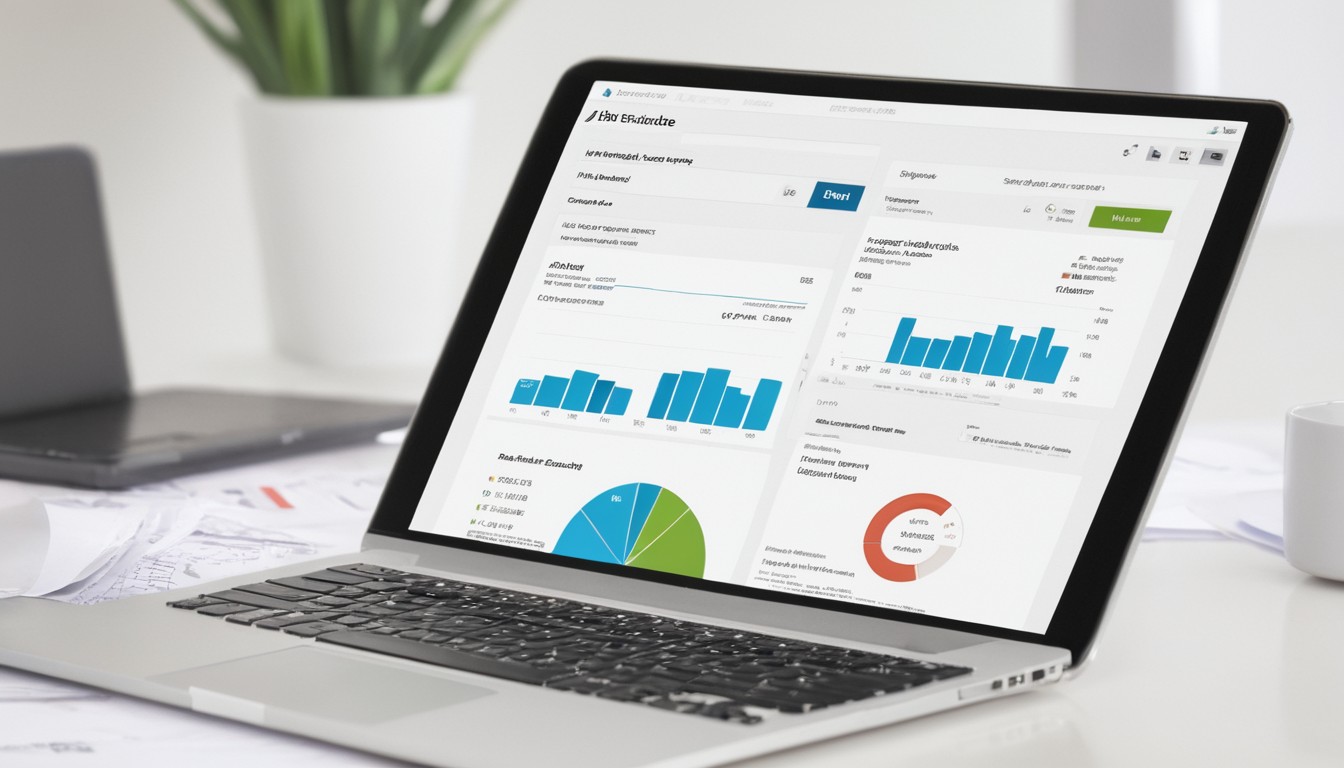The Game-Changing Power of Accounts Payable Automation
-
07 Mar, 2024
-
4 min read

With the relentless pace of technological advancements in today's business landscape, staying ahead of the competition requires organizations to leverage cutting-edge technologies. One area that often goes overlooked but has a significant impact on operational efficiency and cost management is Accounts Payable (AP) automation. In this post, we will delve into the game-changing power of AP Automation and explore the price that is paid by teams who do not embrace this transformative technology.
The Current State of Accounts Payable:
Traditional Accounts Payable processes involve a myriad of manual tasks, including invoice receipt, data entry, approval workflows, and payment processing. These manual processes are not only time-consuming but also prone to errors, leading to delayed payments, missed discounts, and dissatisfied suppliers.
Cue AP Automation and how this changes the game:
1. Efficiency Boost:
AP Automation streamlines and accelerates the entire invoice processing workflow. Automation tools can extract data from invoices, match them against purchase orders and receipts, and route them through approval workflows with unprecedented speed. This efficiency boost translates into faster payment cycles, improved supplier relationships, and a reduction in late payment penalties.
2. Error Reduction:
Manual data entry is prone to human errors, which can have far-reaching consequences. AP Automation minimizes the risk of inaccuracies by leveraging advanced technologies like optical character recognition (OCR) to extract and validate data. This not only ensures data accuracy but also enhances compliance with regulatory requirements.
3. Cost Savings:
The cost of manual AP processes is not limited to labor hours. It includes the expenses associated with late payments, duplicate payments, and the resources required to rectify errors. AP Automation significantly reduces these costs by eliminating manual interventions, optimizing cash flow management, and capitalizing on early payment discounts.
4. Enhanced Visibility and Control:
Automation provides real-time visibility into the entire AP process. AP Automation platforms like System1A provide finance teams with increased transparency, allowing them to track invoices, monitor approval workflows, and analyze spending patterns more effectively. With greater control over financial processes, organizations can make informed decisions and mitigate potential risks.
5. Supplier Satisfaction:
Timely and accurate payments contribute to positive supplier relationships. AP Automation ensures that suppliers are paid on time, fostering goodwill and potentially opening the door to negotiation for better terms. Improved supplier satisfaction can lead to stronger partnerships and enhanced business collaboration.
The Price Teams Pay for Not Automating AP Processes:
1. Increased Operational Costs:
Manual AP processes consume a significant amount of time and resources. Organizations that resist AP Automation may find themselves burdened with escalating operational costs, as more personnel are required to handle the increasing volume of invoices.
2. Missed Opportunities:
Failing to embrace AP Automation means missing out on the numerous benefits it brings, including cost savings, efficiency gains, and improved financial visibility. This reluctance can put organizations at a competitive disadvantage in the long run.
3. Error-Prone Processes:
Manual processes are susceptible to errors, and the cost of rectifying these mistakes can be substantial. The price paid for not automating AP processes includes the financial repercussions of late payments, penalties, and strained supplier relationships.
4. Limited Strategic Focus:
Finance teams spending excessive time on routine, manual tasks have less bandwidth for strategic activities. AP Automation allows organizations to redirect their focus toward value-added tasks such as financial analysis, forecasting, and strategic planning.
AP Automation is undeniably a game changer for those who wish get the most out of their Accounts Payable processes - especially in South Africa where this technology is rapidly being implemented by businesses wishing to optimise their existing AP function. With that said, the price paid for not automating AP is not simply monetary but extends to missed opportunities, increased operational costs, and a lack of strategic focus.
Embracing AP Automation is not just a technological upgrade; it's a strategic move that can propel organizations toward greater success and competitiveness.
Ready to experience the benefits for yourself? Contact a System1A representative or reach out to book a demo today.
The Current State of Accounts Payable:
Traditional Accounts Payable processes involve a myriad of manual tasks, including invoice receipt, data entry, approval workflows, and payment processing. These manual processes are not only time-consuming but also prone to errors, leading to delayed payments, missed discounts, and dissatisfied suppliers.
Cue AP Automation and how this changes the game:
1. Efficiency Boost:
AP Automation streamlines and accelerates the entire invoice processing workflow. Automation tools can extract data from invoices, match them against purchase orders and receipts, and route them through approval workflows with unprecedented speed. This efficiency boost translates into faster payment cycles, improved supplier relationships, and a reduction in late payment penalties.
2. Error Reduction:
Manual data entry is prone to human errors, which can have far-reaching consequences. AP Automation minimizes the risk of inaccuracies by leveraging advanced technologies like optical character recognition (OCR) to extract and validate data. This not only ensures data accuracy but also enhances compliance with regulatory requirements.
3. Cost Savings:
The cost of manual AP processes is not limited to labor hours. It includes the expenses associated with late payments, duplicate payments, and the resources required to rectify errors. AP Automation significantly reduces these costs by eliminating manual interventions, optimizing cash flow management, and capitalizing on early payment discounts.
4. Enhanced Visibility and Control:
Automation provides real-time visibility into the entire AP process. AP Automation platforms like System1A provide finance teams with increased transparency, allowing them to track invoices, monitor approval workflows, and analyze spending patterns more effectively. With greater control over financial processes, organizations can make informed decisions and mitigate potential risks.
5. Supplier Satisfaction:
Timely and accurate payments contribute to positive supplier relationships. AP Automation ensures that suppliers are paid on time, fostering goodwill and potentially opening the door to negotiation for better terms. Improved supplier satisfaction can lead to stronger partnerships and enhanced business collaboration.
The Price Teams Pay for Not Automating AP Processes:
1. Increased Operational Costs:
Manual AP processes consume a significant amount of time and resources. Organizations that resist AP Automation may find themselves burdened with escalating operational costs, as more personnel are required to handle the increasing volume of invoices.
2. Missed Opportunities:
Failing to embrace AP Automation means missing out on the numerous benefits it brings, including cost savings, efficiency gains, and improved financial visibility. This reluctance can put organizations at a competitive disadvantage in the long run.
3. Error-Prone Processes:
Manual processes are susceptible to errors, and the cost of rectifying these mistakes can be substantial. The price paid for not automating AP processes includes the financial repercussions of late payments, penalties, and strained supplier relationships.
4. Limited Strategic Focus:
Finance teams spending excessive time on routine, manual tasks have less bandwidth for strategic activities. AP Automation allows organizations to redirect their focus toward value-added tasks such as financial analysis, forecasting, and strategic planning.
AP Automation is undeniably a game changer for those who wish get the most out of their Accounts Payable processes - especially in South Africa where this technology is rapidly being implemented by businesses wishing to optimise their existing AP function. With that said, the price paid for not automating AP is not simply monetary but extends to missed opportunities, increased operational costs, and a lack of strategic focus.
Embracing AP Automation is not just a technological upgrade; it's a strategic move that can propel organizations toward greater success and competitiveness.
Ready to experience the benefits for yourself? Contact a System1A representative or reach out to book a demo today.
Related insights





